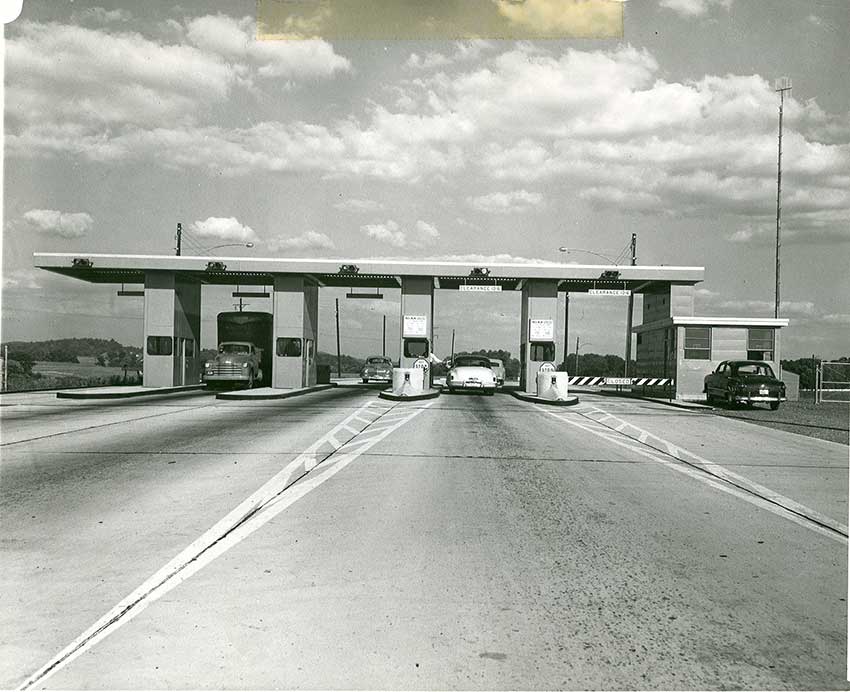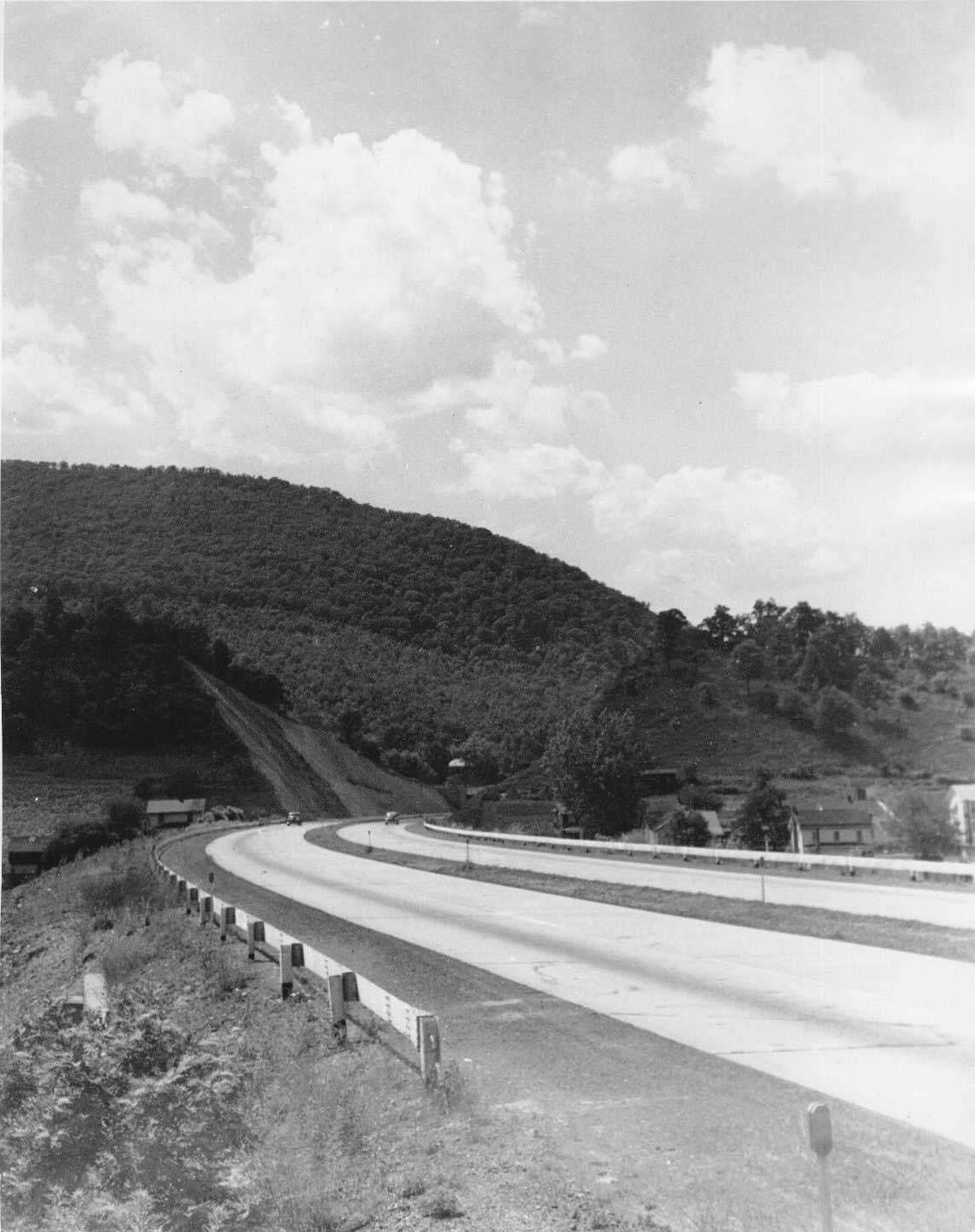On April 23, 1935, Cliff Patterson, a Pennsylvania state representative from the Pittsburgh area and an undertaker, proposed to the legislature a bill to study building a road from Pittsburgh to Central Pennsylvania. The bill passed quickly as the legislature was ready for a vacation and it required no money. However surveys were also quickly begun to see if it was possible to build a super highway from Carlisle to Irwin. 1 The idea was approved and on May, 21, 1937 Governor George H. Earle 111 signed Act 211 creating the Pennsylvania Turnpike Commission and provided the commission with the authority to begin construction and operate the first modern highway, a model to the rest of the nation.2
Not everybody was happy with this decision. Up to this point the main roads had been routes 22 and 30. The owners of restaurants, gas stations, and motels along these established routes felt that they would lose business while their employees would lose their jobs. Farmers who were about to lose lands also opposed the plan. However, in Carlisle, individuals quickly bought up land in Middlesex Township two miles from the proposed Carlisle exit to build new restaurants, gas stations, and motels. A large hotel, The Grand, was built in Carlisle right next to the proposed exit.
Ironically the ground breaking for the new highway was on a farm near Newburg on October 27, 1938.3
Quickly 155 contracts were given to 118 different companies. The first contract was to grade 10 miles in Cumberland County. Grades were limited to three
percent and straightaways were encouraged. No towns were entered. Work was made easier due to past attempts to get a road west to Pittsburgh. Wagon turnpikes in Lancaster had been built as early as 1794 to get from Philadelphia to Lancaster with canals and railroads to follow. It was the bed of the defunct South Pennsylvania Railroad (with water filled tunnels) that was now to be the path of the new turnpike.4
Governor Earle was very active in the construction of the new turnpike. The 1930s were hard times in Pennsylvania. Earle was a believer in President Franklin Delano Roosevelt's New Deal and it was through the New Deal's Public Works Act that the new "All Weather Highway" was made possible.5
The Pennsylvania Turnpike has a history of raising fares (the first fare was $1.50), improvements (better tunnels and the addition of steel medial stripes) and scandals (in 1957 and 1970). But from the beginning the public believed the road would be a less stressful experience and take them away from the many annoyances they experienced on the roads. By 1980, 63 million vehicles traveled the turnpike. Connections to other highways allowed people to travel the east coast on roads that were copies of the turnpike. A Pennsylvania state representative's bold idea had become reality.

